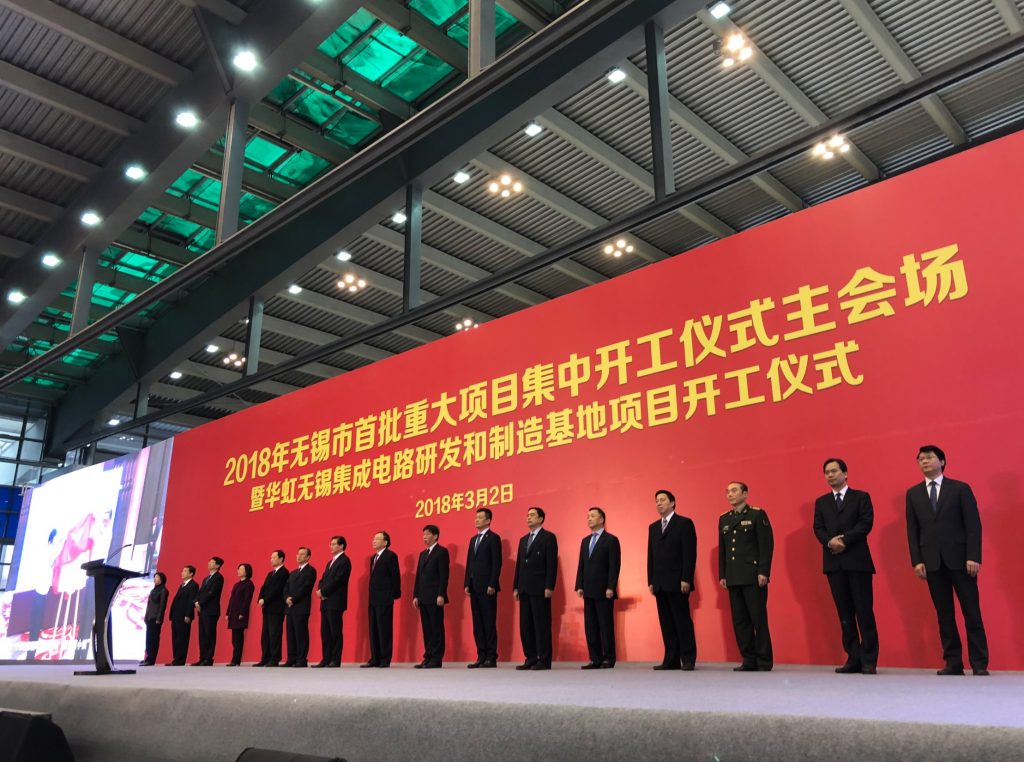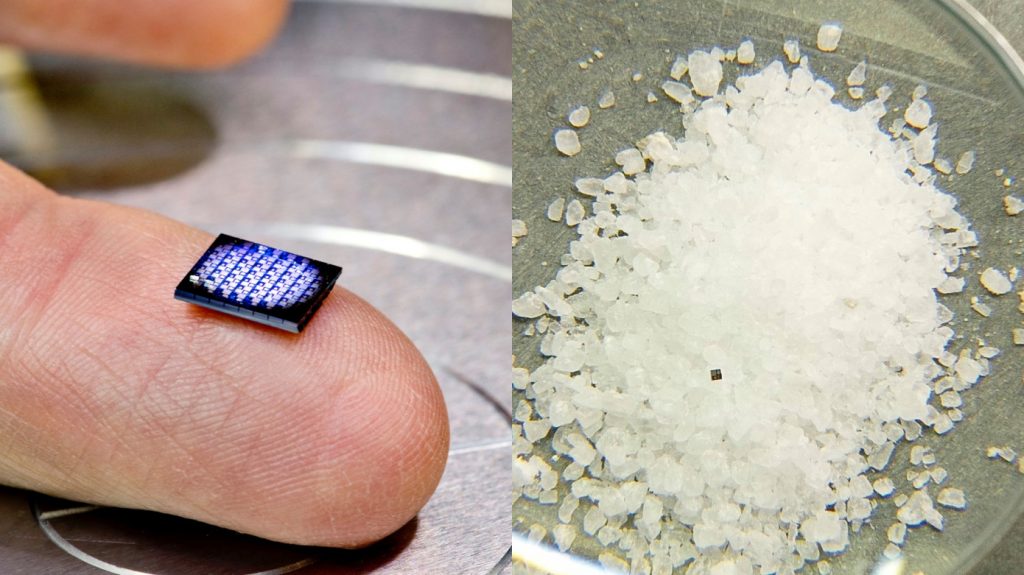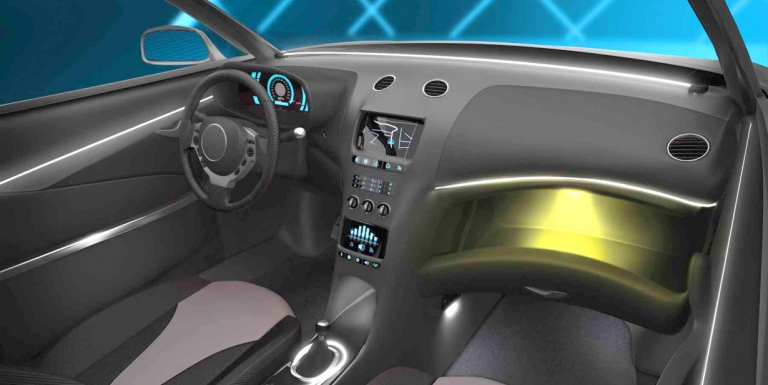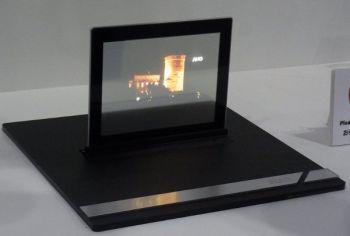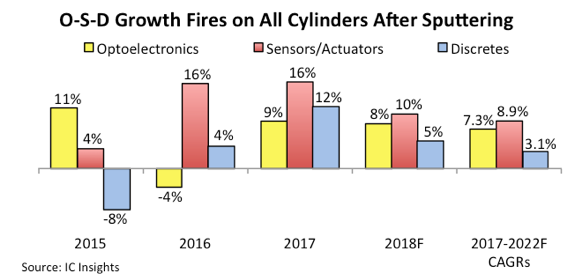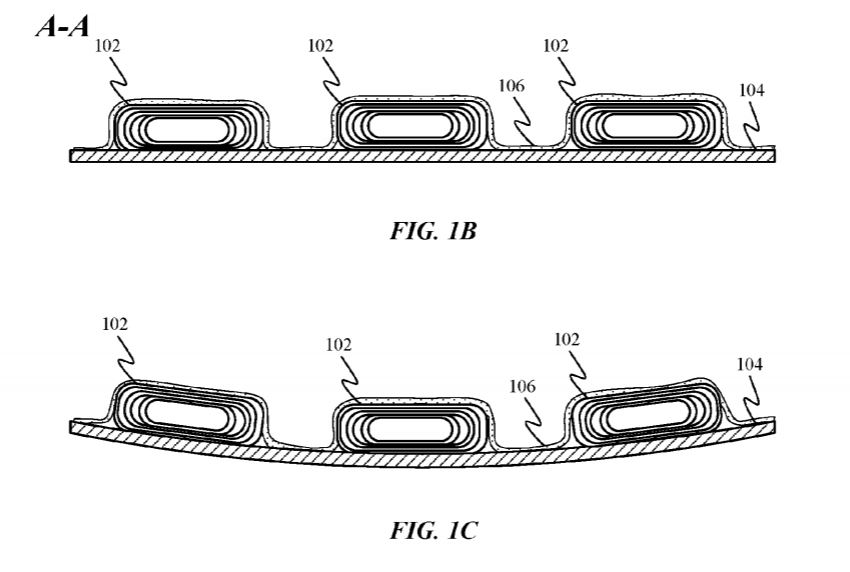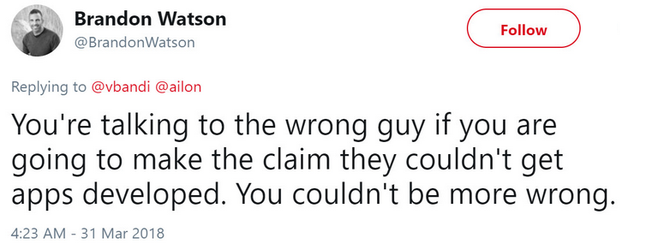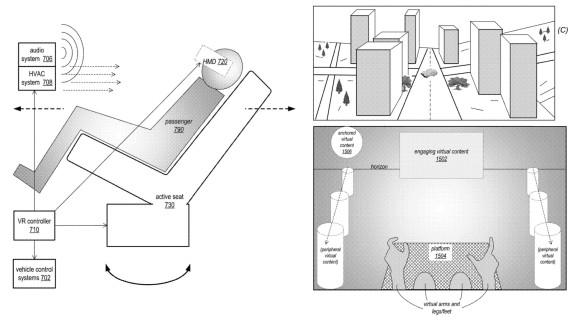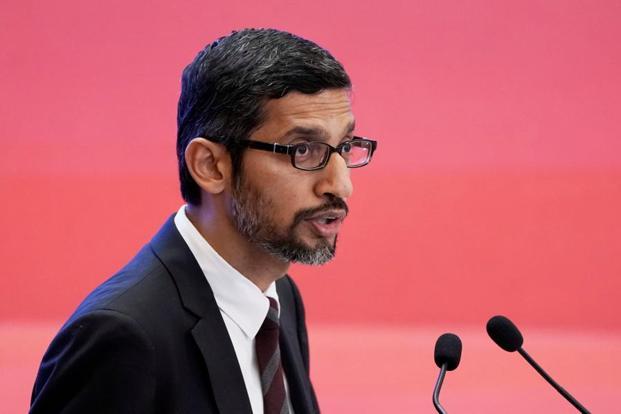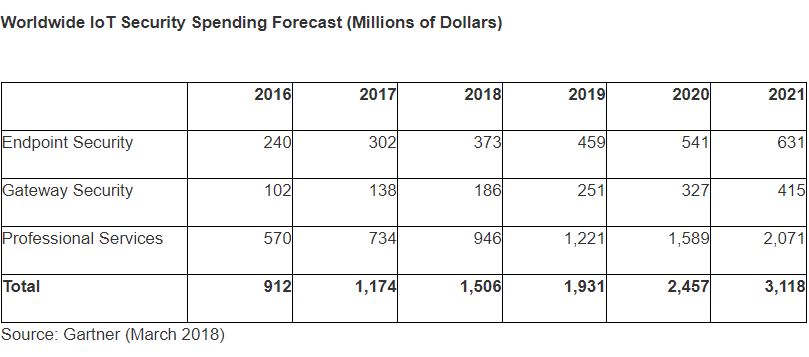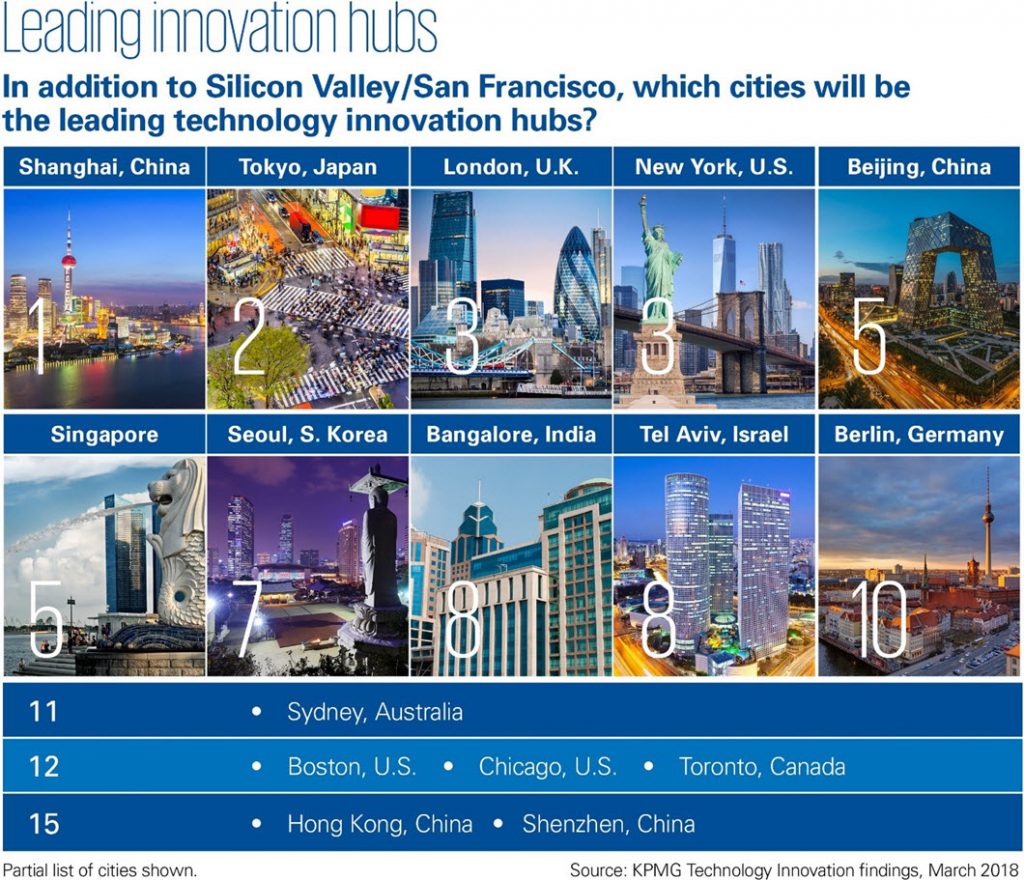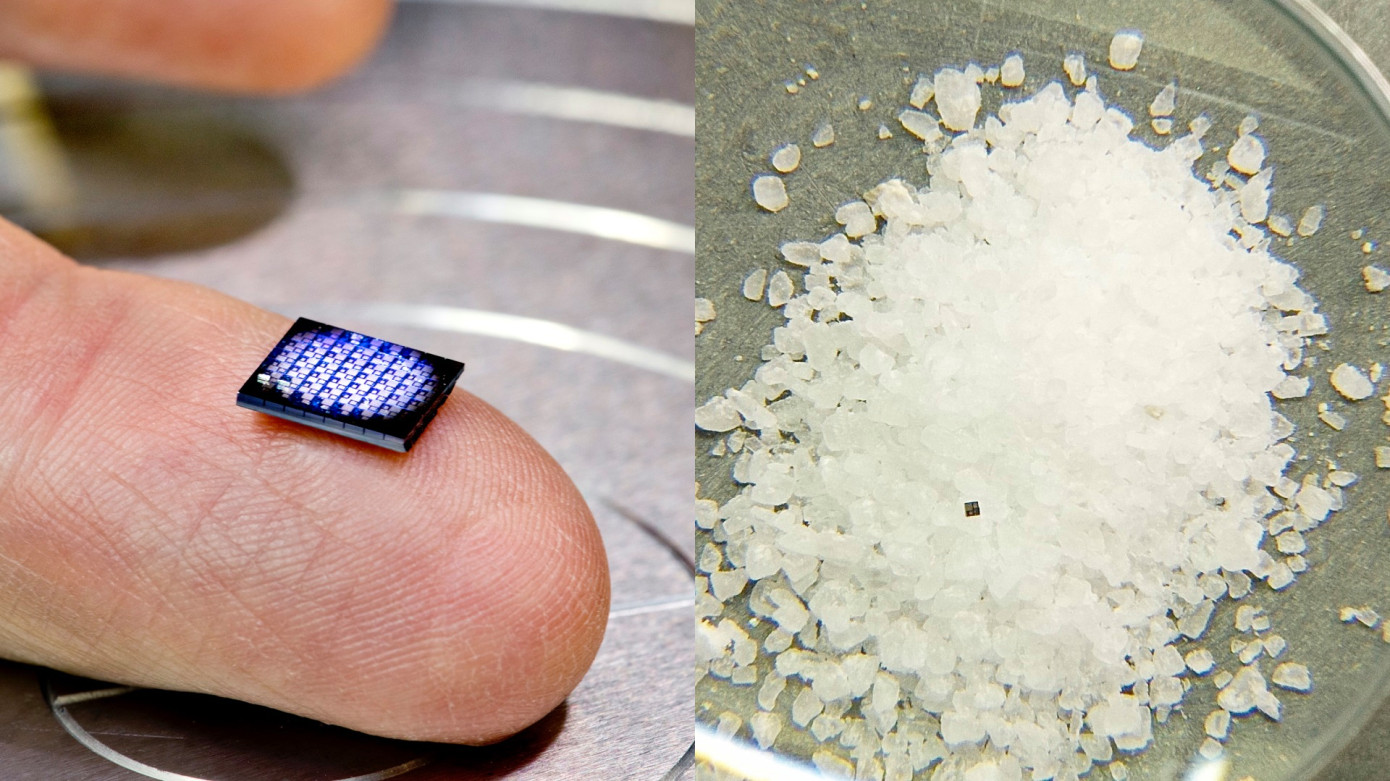
04-01: IBM is building the world’s smallest computer; Bitmain has developed an application-specific integrated circuit for Ether mining; etc.
Chipsets
Susquehanna Financial’s Christopher Rolland indicates that the startup Bitmain has developed an application-specific integrated circuit, or ASIC, chip to mine the Ether crypto-currency. He believes this would impact Advanced Micro Devices (AMD) and Nvidia. The mining occupies AMD’s 20% revenues and 10% of Nvidia’s. (Barron’s, Laoyaoba)
Huahong group of China broke ground to build a USD10B semiconductor production complex ‘Huahong Wuxi Semiconductor Research, Develop, and Production Center’ in Wuxi, China. About USD2.5B will be invested to complete its 1st phase construction plan to build a 65~90nm wafer fabrication facility. Once established, it will be capable of fabricating 40,000 12” wafers per month, mainly churning out chips for IoT and 5G communications. (iTer News, Laoyaoba, JS China)
IBM is building the world’s smallest computer, a size of 1×1mm for the purpose of blockchain technology. The tiny little blockchain device is only going to cost around USD0.10/unit to produce. IBM claims the computer has the power of an x86 chip from 1990. (Laoyaoba, Bitcoinist, The Verge, TechCrunch)
Touch Display
Mercedes-Benz is planning to adopt LG Display (LGD) flexible OLED displays starting with some of the Mercedes E Class models it will release in 1H20. Following that, Mercedes plans to use LGD’s P-OLEDs in several cars, both in dashboards and in rear-seat monitors. Mercedes will use LGD’s OLEDs in the form of a wide screen, combining the dashboard and the central infotainment display. (OLED-Info, Business Korea, PJ Time, OfWeek)
AU Optronics (AUO) has developed a 13” 100PPI transparent OLED display, specifically for AR applications. This is a highly-transparent display – with 68% transmittance. To achieve such high transparency, AUO optimized the TFT array layer stack, the OLED cathode pattern and the encapsulation. (OLED-Info, SID, PixPO, KK News)
Memory
Unigroup Guoxin indicates the company’s DDR4 DRAM chipset is still under development and optimization, and will push into the market gradually within 2018. (Laoyaoba, P5W, Moore)
Sensory
MEMS chip company Suzhou In-Situ Chip Company has announced completed a round of fundings, and witn that the company will focus on new emerging bio-MEMS chipset market. The company will launch the first MEMS liquid flow sensor, and completed a number of promising new biological chip R&D and pilot tests such as MEMS chip insulin pump and PoCT instant blood test chip. (Laoyoaba, 3MT, Qudong)
Combined sales for optoelectronics, sensors/actuators, and discrete semiconductors (known collectively as O-S-D) increased 11% in 2017—more than 1.5 times the average annual growth rate in the past 20 years—to reach an eighth consecutive record-high level of USD75.3B, according to IC Insights. Total O-S-D sales growth is expected to ease back in 2018 but still rise by an above average rate of 8% in 2018 to USD81.1B. (IC Insights, press, Laoyaoba)
Battery
Apple is planning major improvements for the coming years when it comes to flexible phone components. A recently discovered patent titled ‘flexible battery structure’ has revealed that Apple is considering a new kind of battery. (Laoyaoba, CN Beta, USPTO, Deccan Chronicle, WCCFTech)
Connectivity
On 30 Mar 2018, Tianjin’s first 5G base station was opened in China Mobile joint innovation center Tianjin open laboratory. Tianjin is the first 5G application demonstration city in the country. The opening of the first 5G base station marks the critical stage of 5G technology in Tianjin. (CN Beta, Waonews)
Phones
Brandon Watson was a Senior Director for Microsoft Windows Phone Mar 2010~Feb 2012, responsible for developer platform product management. He has indicated that Windows Phone died because it would have been almost impossible to beat Google or Apple without carriers and handset manufacturers embracing it. (Phone Arena, MS Poweruser)
OPPO has indicated that they will not be coming to the US while the Trump Administration is running things. (Gizmo China, Android Headlines, CN Gold)
Millennials are always the people thought to be the most addicted to their devices. Addled by social networking, obsessed with taking selfies and hustling for likes, youngsters cannot put their damn phones down. However, the data suggests that the ones most hooked on their devices are those graying Gen Xers. Research by Nielsen, for example, found that Americans aged 35~49 used social media 40 minutes more each week than those aged 18 to 34. (TechNews, Wired)
Wearables
Qikoo 360 is launching a series of kid’s smartwatches including X series, SE series and X1 PRO flagship, covering price range CNY69, CNY199, CNY1499. (Laoyaoba, China News, Leiphone)
The US Patent and Trademark Office has published an Apple VR patent application, which demonstrates how VR headsets could be worn by all the passengers in a self-driving car, rendering windows with a view of the outside world – or indeed any world that the occupants of the car wanted to go through. (Laoyaoba, VentureBeat, USPTO, Engadget, TechRadar, Patently Apple)
Internet of Things
Facebook reportedly could be delaying the launch of its smart speakers amid data crisis. Facebook is taking time for deeper review in order to ensure that they make the right trade-offs regarding user data. (Gizmo China, Bloomberg, Sina)
Sundar Pichai, chief executive officer of Google, expects China to play a crucial role in artificial intelligence (AI) as he keeps expanding the search giant’s workforce in the country, even as many of its services are blocked. (Laoyaoba, My Drivers, Live Mint, Bloomberg)
Gartner’s survey has found that nearly 20% of organizations observed at least 1 IoT-based attack in the past 3 years. To protect against those threats Gartner forecasts that worldwide spending on IoT security will reach USD1.5B in 2018, a 28% increase from 2017 spending of USD1.2B. (Laoyaoba, Gartner, press)
According to KPMG, the U.S. and China dominate the tech leadership charts. India, Japan and the U.K. are markets to watch. 45% predict the innovation epicenter will move from Silicon Valley by 2021. Shanghai, Tokyo, London, New York, Beijing and Singapore are expected to become leading technology innovation hubs in addition to Silicon Valley/San Francisco. (VentureBeat, KPMG, report, Sina, Qianzhan)
